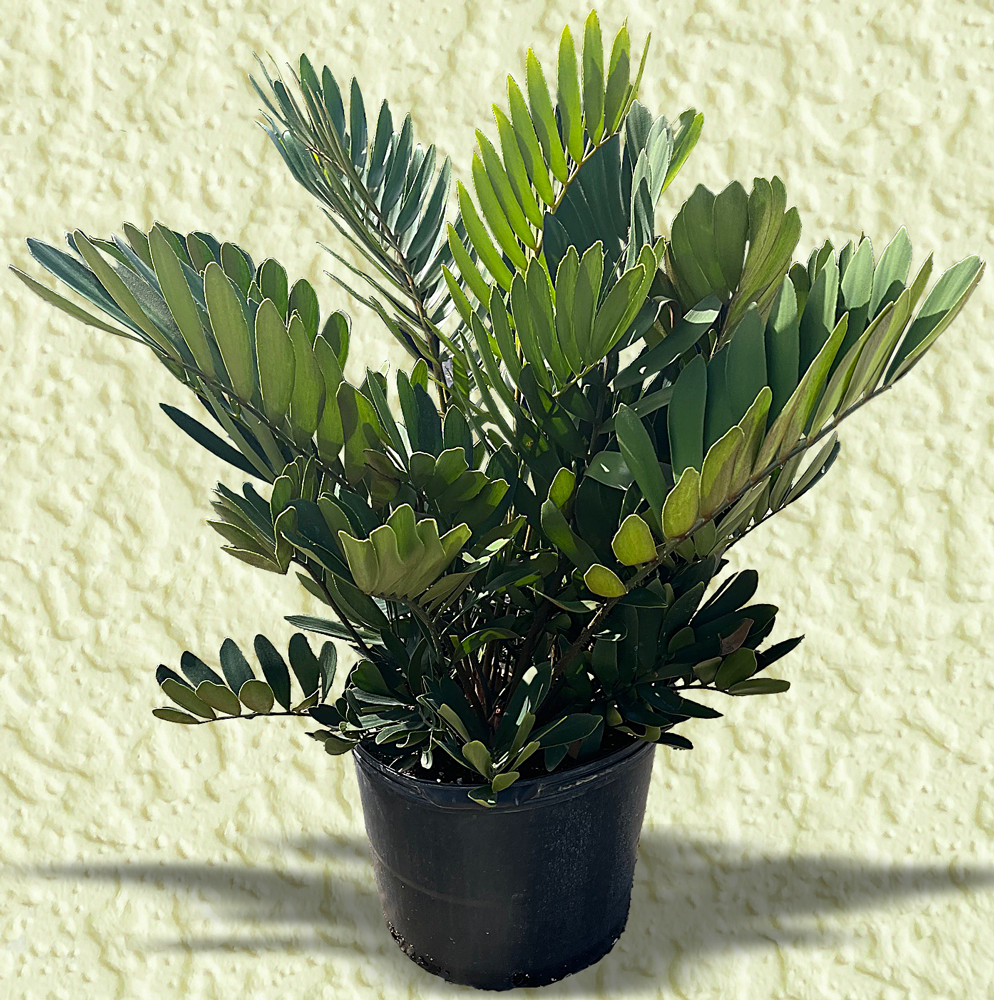![]()
Zamia furfuracea
The Cardboard Plant, known scientifically as Zamia furfuracea, has been around since the time of the dinosaurs and remains a great plant for landscapes, borders, mass plantings, containers or above-ground planters.
Common names are Cardboard Palm, Cardboard Cycad, Cardboard Plant, Jamaican Sago, Cardboard Sago and Mexican Cycad. It isn't a true palm, instead it's what is botanically known as a “Cycad.” Cycads and palms share similar leaf structures but are two unique types of plants. Other Cycads include the widely used King Sago, or Cycas revoluta.
As the most popular Cycad species in cultivation, this species can be grown in just about any room of your home.
PLEASE NOTE, these plants are Toxic to Children, Dogs and Cats!
Things You Need To Know
Exposure
This plant can be grown in partial sun, partial shade, and full sun. When growing indoors it’s recommended that you place your plant in a location where it will receive full sunlight at least six to eight hours each day.
Bloom Time
N/A
Water
The Cardboard Palm plant thrives in sandy, well-drained soil with a slightly acidic to neutral pH. It prefers soil that is rich in organic matter, such as compost or peat moss, to promote healthy root growth and nutrient uptake. Additionally, the soil should be loose and aerated to prevent waterlogging, which can lead to root rot. Watering should be done with moderation because plants are drought-tolerant once they become established.
Height
2-5 ft. tall (indoors), 5-8 ft. wide (indoors)
Spacing
Several can be planted together for a lush, tropical effect. They also create a dramatic effect when mass-planted in a shrub border, eventually reaching to 6 or 8 feet tall. Plant on 3- to-5-foot centers to create a mass planting. The fronds of cardboard plant can grow to 3 feet long with up to twelve pairs of stiff, leathery, dark green leaflets. The foliage is evergreen and provides a great backdrop for colorful flowers in landscape beds.
The leaves grow out of a thick, fleshy trunk that serves as a reservoir in times of drought.
Hardiness
The Cardboard Plant is hardy in USDA hardiness zones 9-11, which means it is best suited for central and south Florida, but can be grown in pots in most zones. Growing in full sun or shade, cardboard plant tolerates a variety of well-drained soils.
Just use a balanced fertilizer such as a slow-release palm food (you can use a palm food despite the fact that this plant is not a true palm!) or a diluted household plant food about once per month during the growing season.

